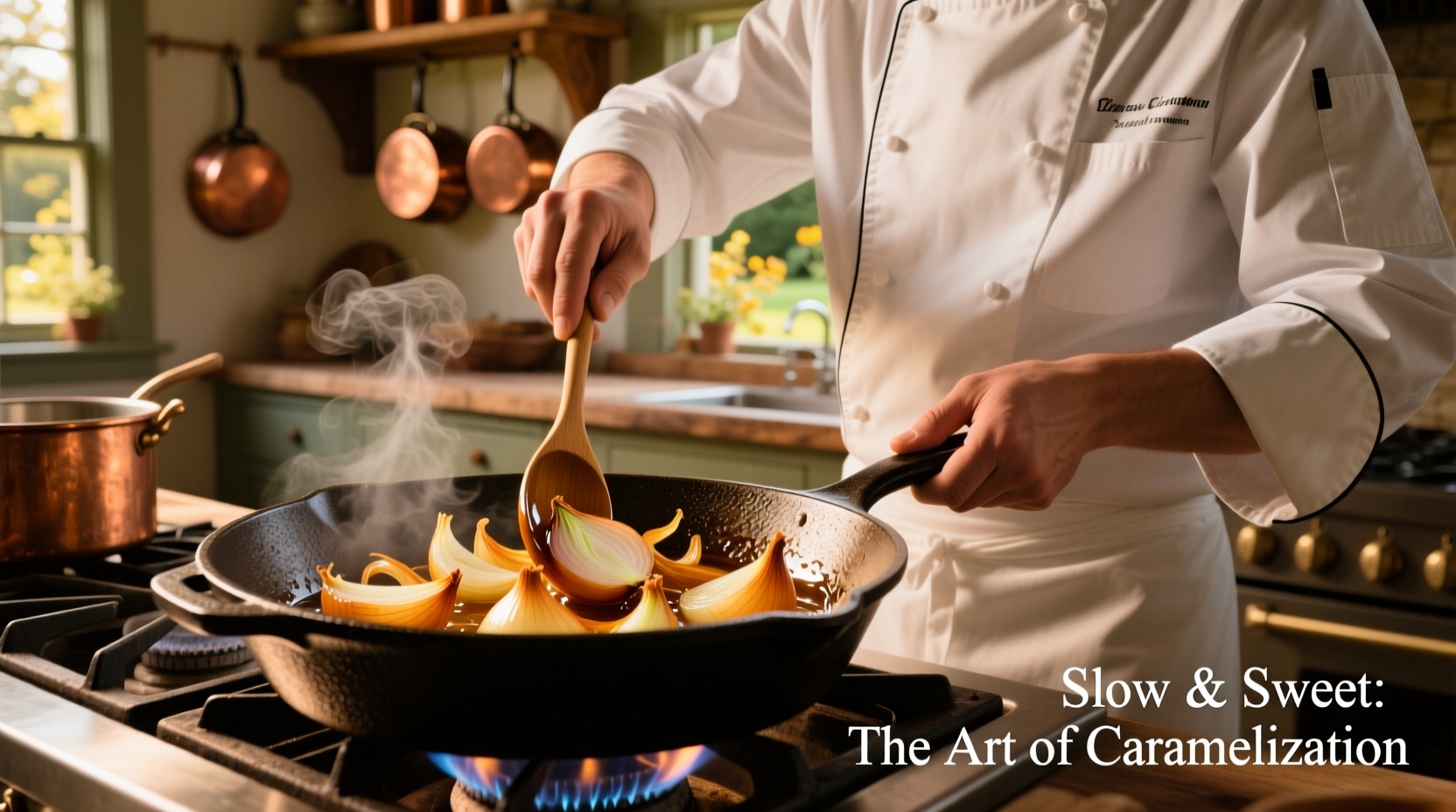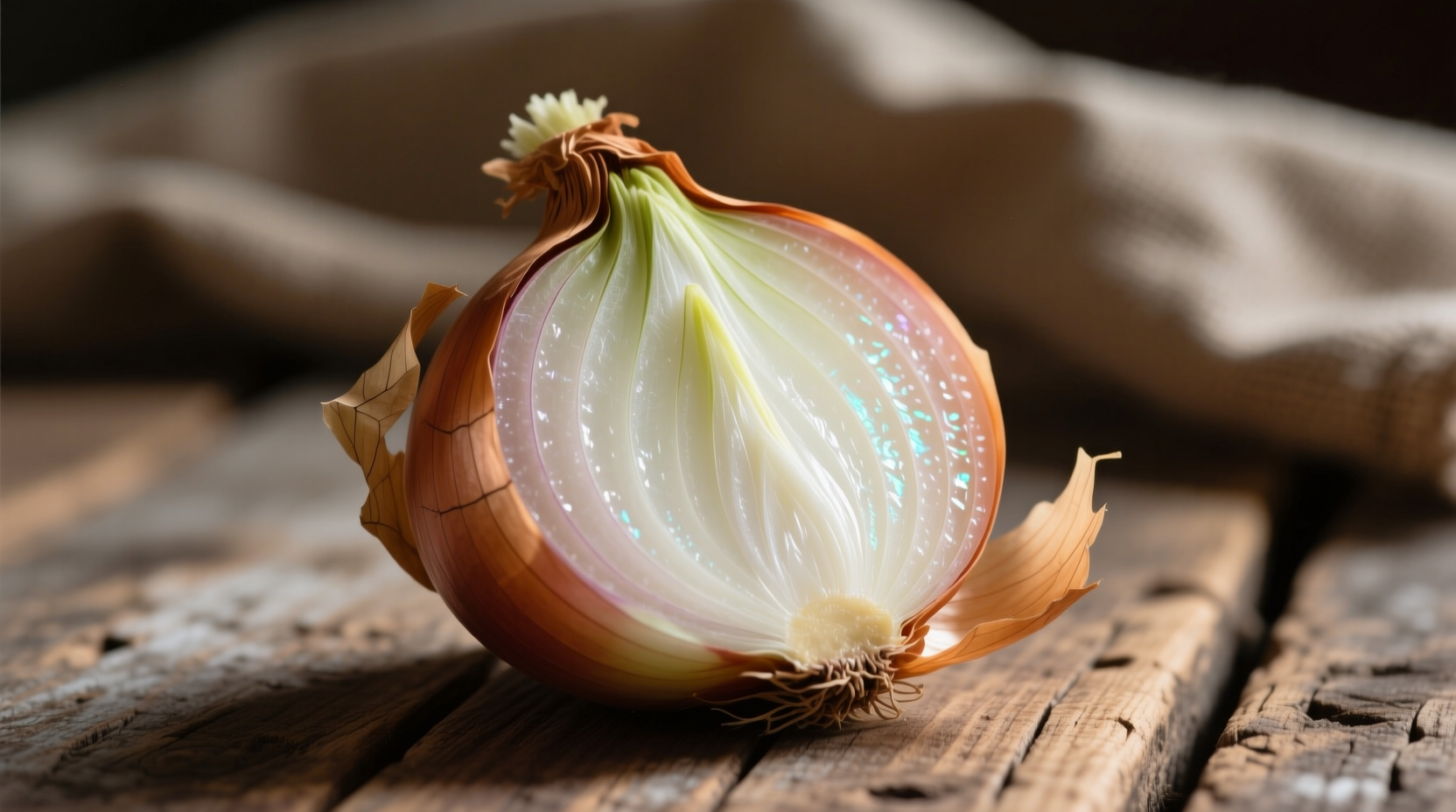When chefs refer to the onion, the onion, they're emphasizing this humble vegetable's irreplaceable role as cooking's fundamental building block. Unlike other ingredients that merely add flavor, properly prepared onions create the very foundation upon which countless dishes are built. This comprehensive guide reveals why professional kitchens treat onions with such reverence and how you can harness their full potential.
The Science Behind Onion's Culinary Magic
Onions contain amino acid sulfoxides that transform when cut, releasing enzymes that create sulfenic acid. This rapidly converts to syn-propanethial-S-oxide—the compound responsible for both onion's distinctive flavor and that familiar eye-watering effect. Understanding this chemical reaction is crucial for controlling onion's impact in your cooking.
| Onion Compound | Formation Process | Culinary Impact |
|---|---|---|
| Syn-propanethial-S-oxide | Enzyme reaction when cells are broken | Sharp pungency, eye irritation |
| Thiosulfinates | Formed during cooking | Complex savory notes, aroma development |
| Sulfides | Develop during prolonged cooking | Sweet, caramelized depth |
Mastering Onion Varieties: Beyond the Basics
Not all onions serve the same purpose. Selecting the right variety at the right stage transforms dishes from ordinary to exceptional. The National Onion Association categorizes onions by both color and seasonality, each with distinct chemical compositions affecting their culinary applications.

Spring Onions: The Delicate Foundation
Harvested young with thin skins and high water content, these include:
- Scallions: Mild flavor ideal for finishing dishes
- Spring onions: Slightly more developed bulb with subtle sweetness
- Shallots: Complex flavor profile with garlic notes
According to USDA agricultural research, spring onions contain 20-30% less pyruvic acid than storage varieties, resulting in their characteristic mildness that won't overpower delicate sauces or raw preparations.
Storage Onions: The Flavor Architects
These mature varieties develop complex flavor compounds during curing:
- Yellow onions: Highest sulfur content (78% of U.S. production)—ideal for caramelization
- Red onions: Anthocyanin pigments provide color and slightly sharper flavor
- White onions: Crisp texture maintains integrity in salsas and grilled dishes
The Professional's Onion Timeline: From Raw to Transformed
Understanding how onions evolve during cooking separates amateur from professional results. This timeline reveals precisely what happens at each temperature threshold:
Contextual Application: When to Use Which Onion Technique
Professional chefs match onion preparation to dish requirements. This decision framework helps you make informed choices:
- Raw applications: Use red onions for color contrast in salads; soak in ice water for 10 minutes to reduce sharpness while maintaining crunch
- Sweating: Essential for mirepoix (60% onions, 40% celery/carrot) in French cuisine—never brown for proper flavor foundation
- Caramelization: Yellow onions develop 37% more complex sugars than other varieties according to Cornell Food Science research
- Confit technique: Slow-cooking onions in fat (3-4 hours at 200°F) creates meltingly tender texture without browning
Avoiding Common Onion Mistakes
Even experienced home cooks make these critical errors that undermine their dishes:
- Overcrowding the pan: Causes steaming instead of proper browning—use 1 onion per 10 square inches of pan surface
- Insufficient cooking time: Many stop sweating too early, leaving raw flavor that never fully integrates
- Incorrect knife skills: Uneven pieces cook inconsistently—uniform 1/4-inch dice ensures even flavor development
- Adding salt too late: Salt drawn out moisture early creates better browning—add 1/4 tsp per medium onion at start
Advanced Onion Techniques from Professional Kitchens
Elevate your cooking with these chef-developed methods:
- Layered flavor building: Start with 30% of your onions raw in vinaigrettes, 50% sweated for base, 20% caramelized for finish
- Onion oil infusion: Steep onion skins in neutral oil (200°F for 2 hours) for instant depth in soups and sauces
- Freeze-dried onion powder: Creates pure onion flavor without moisture—ideal for spice blends (1 tbsp = 1 medium onion)
- Onion ash technique: Burn onion skins completely, then mix ash with salt for smoky finishing salt (popular in modernist cuisine)
Storage Science: Preserving Onion Quality
Proper storage maintains the chemical integrity that makes onions valuable. The University of California Cooperative Extension recommends:
- Store whole bulbs in mesh bags in cool, dark, dry place (55-60°F)
- Never refrigerate whole onions—causes moisture absorption and spoilage
- Cut onions last 7-10 days in airtight container with paper towel to absorb moisture
- Freeze diced onions on baking sheet before transferring to bags for clump-free storage
Understanding the onion, the onion means recognizing that this single ingredient can make or break your dish. By mastering onion varieties, chemistry, and preparation techniques, you gain access to the foundational flavor building blocks that define professional-quality cooking. The next time you reach for an onion, remember—you're not just adding an ingredient, you're constructing the very essence of your dish's flavor profile.











 浙公网安备
33010002000092号
浙公网安备
33010002000092号 浙B2-20120091-4
浙B2-20120091-4